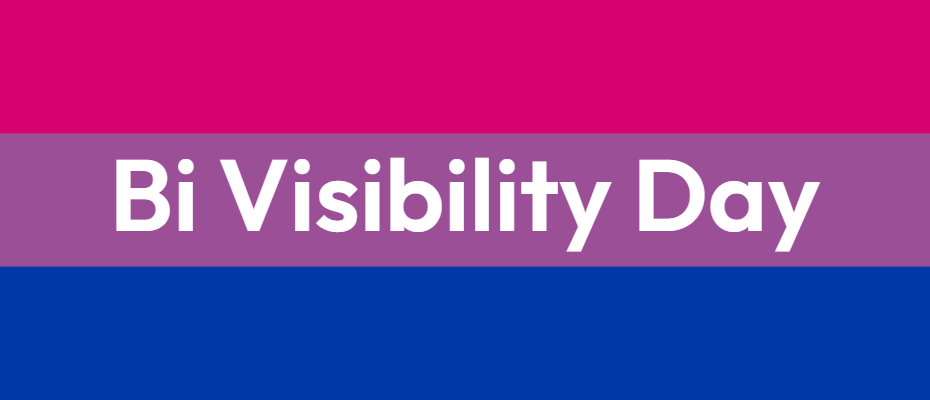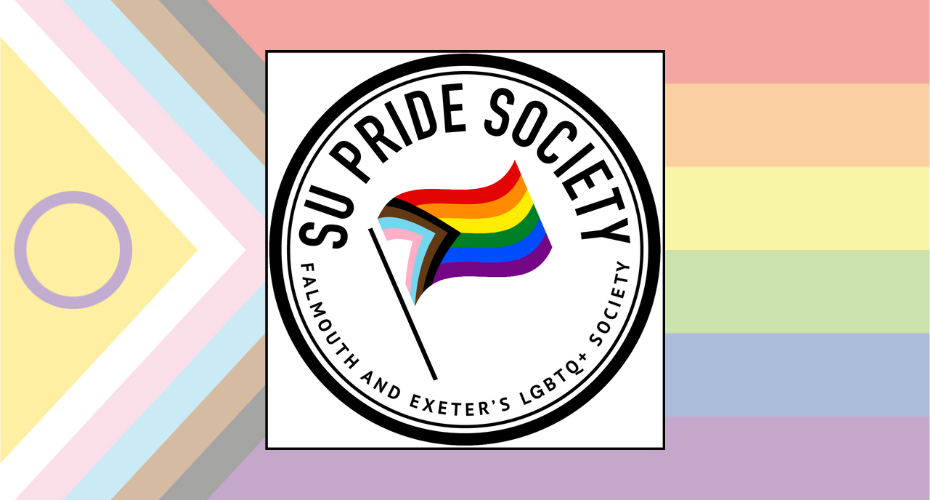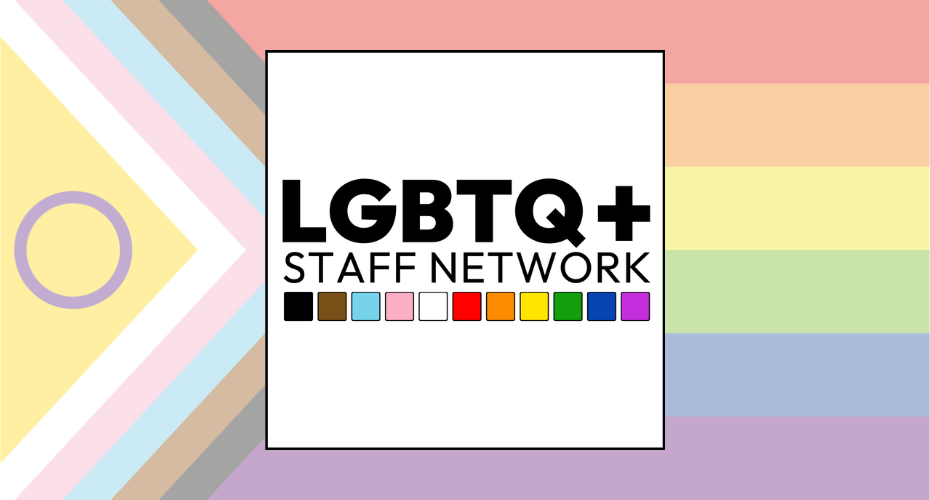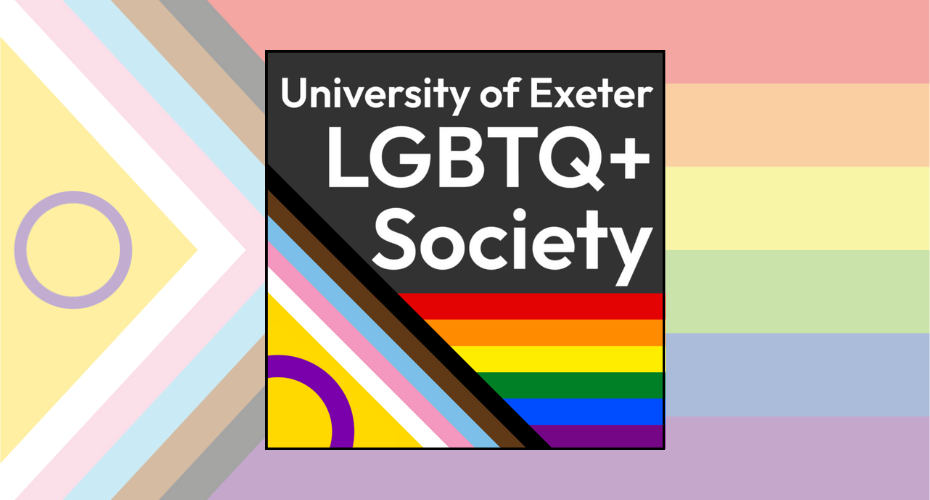Bi Visibility Day
Bi Visibility Day (BVD) occurs every year on September 23, created to celebrate, recognise, and bring visibility to bisexual-identified members of the LGBTQ+ community. It’s about honouring and elevating this diverse community of people who are often overlooked and invalidated by way of their sexual orientation. Bisexual individuals may face discrimination and marginalisation within both straight and LGBTQ+ spaces, making it important to raise awareness of their experiences and unique struggles. BVD is a day to celebrate bisexuality and promote understanding and acceptance of this often misunderstood identity.
Events by year
Bi Visibility Day is celebrated annually, on the 23 September, since 1999. It celebrates Bi identities and people, and their vital place in the LGBTQ+ community
Bi is an umbrella term used to describe a romantic and/or sexual orientation towards more than one gender. Bi people may describe themselves using one or more of a wide variety of terms, including, but not limited to, bisexual, pan, queer, and some other non-monosexual and non-monoromantic identities.
Biphobia
The concept of bisexuality as we understand it today is as old as ideas of homosexuality and heterosexuality, however, according to Stonewall’s LGBT in Britain Bi Report 43% of bi people have never attended bi spaces and many have experienced harassment when they do. – 27% of bi women, and 18% of bi men, have experienced discrimination from other members of the LGBTQ+ community. Experiences of discrimination based on bi-identity are called Biphobia.
Bi people can often find that their identity is overlooked as they can pass as straight, or homosexual, depending on their partner. Bi people are some of the least likely people in the LGBTQ+ community to come out:
- 23% of bi students are out in university, compared to 44% of gay and lesbian students
- 22% of bi staff are out at work compared to 57% of lesbian and gay staff
Perhaps unsurprisingly based on this, bi people are almost twice as likely to experience unwanted sexual contact as lesbian and gay people and report significantly higher levels of depression and self-harm.
Bi Erasure
The tendency to ignore, explain away, or avoid showing bi people is called Bi Erasure, it can present in many forms, including:
Writing bi people out of academics
Discussing LGBTQ+ identities in history is difficult and often leads to problems. In some cases, there is a tendency to ignore LGBTQ+ identities entirely, but where a figure is known to have had relationships with all genders, there can be a tendency to read this as homosexuality, erasing the possibility that bi people could exist. In other disciplines, bi people’s needs may be overlooked based on ideas that LGBTQ+ relationships will always be same sex.
Treating bi people as indecisive
Bi identities are sometimes erased because people assume that it means a person has not decided or is unsure of their sexuality. Given the high number of bi people who do not come out compared to lesbian and gay people, this is unlikely to be the case.
Hypersexualising bi people
Bi people are often fetishized, and presumed to be either extremely sexual or looking for attention. This leads to a false view of what being bi is, and feeds into people not believing bi people when they come out.
Overlooking bi identities
Society likes to presume that people are straight until proven otherwise and there’s often a tendency to ignore the possibility that LGBTQ+ people might be around. This means that when bi people come out their identities can be ignored, forgotten, or deemed unimportant. However, the ability to be open about who you are and not have to hide is a fundamental part of a happy and fulfilling life and if someone chooses to be open about their identity this deserves treated with respect. Particularly because coming out is not necessarily easy or risk-free.
Bi Visibility Day is celebrated annually, on the 23 of September, since 1999. Bi Visibility Day raises bi awareness and challenges bisexual & biromantic erasure. 2021 will be the 23rd year that we have celebrated bisexual life on 23 September.
So what does bi mean?
Bi is an umbrella term used to describe a romantic and/or sexual orientation towards more than one gender. Bi people may describe themselves using one or more of a wide variety of terms, including, but not limited to, bisexual, pan, queer, and some other non-monosexual and non-monoromantic identities.
This year we are focusing on raising awareness of some members of the bi community both past and present.
Bi in Our Community
PRISM Exeter is a network for LGBTQ+ individuals and their allies working and studying in the local Science, Technology, Engineering, Mathematics and Medicine (STEMM) sector.
PRISM Exeter YouTube channel has a few videos of talks from Bi STEMM professionals.
PRISM Exeter - Being Bi and Sci-curious
Dr Natasha Stephen
In this video, Dr Natasha Stephen, Director of the Plymouth Electron Microscopy Centre and lecturer in Advanced Analysis (Earth & Planetary Sciences), explains how the academic system is far from equitable - particularly within the fields of science, technology, engineering, mathematics and medicine - and how success often feels as though it is drifting further and further out of reach. However, hope is not lost (!) as we hear how grassroots organisations are starting to make big waves, and there is a place for everybody in the new world order!
Nat is a bisexual ECR at the University of Plymouth, who can normally be found in her microscopy lab playing with rocks and meteorites. She had a rocky road into academia, and is still navigating the shark-infested waters but truly believes that it’s worth fighting to make academia better for everyone. Nat is also a founding member of TIGERinSTEMM and chair of the Royal Astronomical Society’s diversity committee.
This talk was recorded during PRISM Exeter's Speakers event for LGBTQ+ STEMM Day on November 17th 2020. The Speakers series aims to showcase the incredible work being done by LGBTQ+ individuals in Science, Technology, Engineering, Maths and Medicine (STEMM) and provide a platform for broader discussions on diversity and inclusion within STEMM.
"Bi people are often the forgotten part of the LGBT community. Our experiences are commonly assumed to be the same as lesbian and gay experiences, and our identities are frequently made invisible or dismissed as something that doesn’t exist, by people both inside and outside of this community." - Stonewall (Why do we need Bi Visibility?)
So what does bi mean?
Bi is an umbrella term used to describe a romantic and/or sexual orientation towards more than one gender. Bi people may describe themselves using one or more of a wide variety of terms, including, but not limited to, bisexual, pan, queer, and some other non-monosexual and non-monoromantic identities.
This year we are focusing on Bi-Erasure. Bi people face Bi-Erasure from both inside and outside of the LGBTQ+ community.
OK, I understand that, so what is Bi-Erasure?
Bi-Erasure or Bi-Invisibility, as it is also known, refers to a lack of acknowledgement and ignoring of the clear evidence that bi people exist. This is a form of Bi-phobia and means a huge proportion of bi people are facing the harmful effects of biphobia in their daily lives – the stereotypes, the invisibility, the lack of belief that bi people exist – without the benefit of support, reassurance and acceptance from their parents, grandparents and siblings.
With this in mind, it’s not surprising that bi people have higher levels of anxiety, and lower levels of happiness and life satisfaction, than lesbian, gay and straight people. And these will be worse for those with other marginalised identities, for example, bi people of colour, bi trans people, bi disabled people and bi people of faith.
So give me a couple of examples of Bi-Erasure?
Denying that bi people exist - Statements such as 'It's just a phase' or 'You're just experimenting, you will know if you gay or straight soon' reinforce the idea that bi people don't exist and that you can be only straight or gay.
Assuming that bi people are 'straight now' or 'gay now' because of relationship status - Being in a relationship with someone of the same gender, or opposite gender, does not mean that the individuals are gay or straight. Many bi people are assumed gay or straight for this very reason.
What are the effects of Bi-Erasure?
Bi-Erasure reinforces the internal guilt and doubt that bi people deal with. The constant questioning if what you feel is real. The societal expectance that you should be in either gay or straight relationships and identify as such.
Stonewall published a report in 2018 on the health of LGBTQ+ people in Britain. In this report, the statistics are broken down by sexual orientation, which revealed the differences between bi people and gay and lesbian people. The bi community has the highest rates of self-harm, the highest rates of anxiety and also the greatest proportion of suicidal thoughts. It also revealed that the bi community has the highest percentage of substance misuse of the LGBTQ+ community.
What can I do as a Bi Ally?
As a Bi Ally, to support the bi community, you can be supportive in many ways.
- Listen - Go into conversations with an open mind about identity, and ready to understand that someone’s bi identity might not be what you were imagining. Leave your preconceived notions at the door.
- Learn - Research about some of the questions you may have about bi people. Don't overburden bi people with your questions, instead look to organisations like Stonewall, Bisexual Resource Centre or the Human Rights Campaign.
- Practice - Put into practice what you have learnt. Don't assume someones sexual orientation based on their relationship. Challenge Bi-Erasure and Bi-Phobia.
Most importantly as a Bi Ally, encourage bi inclusion.




